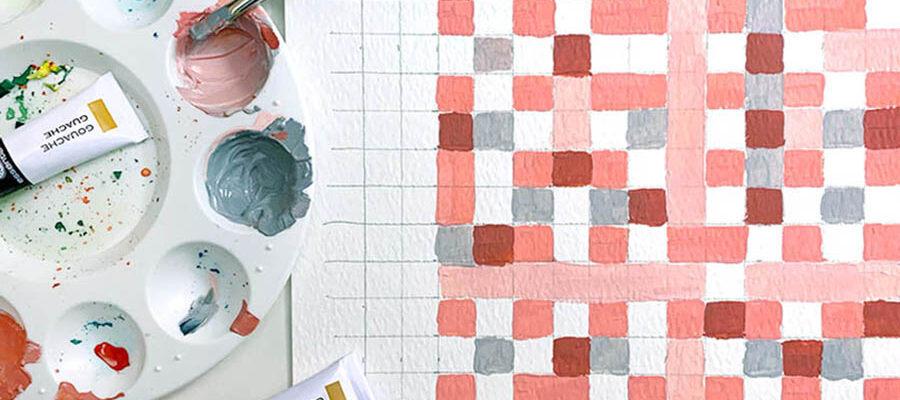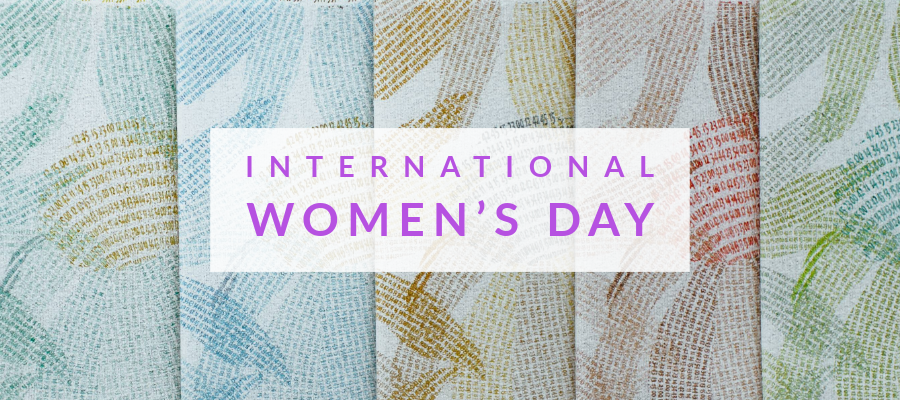
The Women of the Bauhaus
2019 has been an exciting year for anyone who appreciates the women of the Bauhaus. Around the world, museums have been installing exhibits that celebrate the 100th anniversary of the opening of the Bauhaus in Weimar, Germany in 1919. From a vast retrospective of Anni Albers at the Tate Modern in London to The Bauhaus and Harvard, a small exhibit at the Harvard Art Museum featuring work from their extensive Bauhaus collection, enthusiasts are once again shining a light on one of the 20th century’s most influential schools of art, design, and architecture.
Though the Bauhaus was only open for 14 years before being forced to close under pressure from the Nazis, the impact the school had on art and design can not be understated. Many artists and designers look to the work of Bauhaus painters and architects for inspiration, and textile designers are no different.
When the Bauhaus opened in 1919, its founder Walter Gropius announced a bold idea; women could apply to study there. However, when so many women did apply, the school decided the women should study weaving, and The Weaving Workshop came to be. The Weaving Workshop would go on to be the most successful workshop at the Bauhaus and produce an incredibly talented group of textile designers. The group of women and their work continues to inspire 100 years later.
It’s hard to look at the weavers and sum up what makes their work and talent so special, but they stand out in three unique ways.
Technical Proficiency
On the one hand, weaving can be the simple act of two sets of threads interlacing. Warp and weft are going up and under each other. Yet weaving is also incredibly complex. A piece of cloth may seem flat, but it’s not. It’s a three-dimensional structure that has been built, thread by thread. And those threads aren’t always just going up one, under one. Just as often, they work together to create incredibly intricate structures with various properties. A cloth used for a wedding veil will be very different from that used for wall covering in an auditorium.
The Weaving Workshop was a place where women used hand looms to experiment with constructions and techniques and develop fabric that could be mass-produced or stand alone as a piece of art. They studied some of the most intricate textiles in the world, such as those from ancient Peru, and worked with their counterparts from other departments to design fabric for furniture, rooms, and buildings.
Design Sensibility
Their designs may have been technically successful, but that doesn’t mean they sacrificed anything visually. Their work was modern, with a high level of sophistication regarding color and pattern. They studied color theory and worked with teachers at the Bauhaus, such as Wassily Kandinsky and Paul Klee. Marrying color and design to technical proficiency produced textiles as beautiful today as they were when they were first designed.
Leadership Skills
Before terms like “lean in” and “girl boss” became book titles and hashtags, these women were experts, leaders, and bosses. Gunta Stölzl became the only female Bauhaus master and ran the Weaving Workshop with enthusiasm and professionalism that inspired all the other weavers. When the Bauhaus eventually closed, many of the weavers took their knowledge and continued to work designing for industry and/or teaching. Anni Albers, for example, emigrated to the United States with her husband and taught at Black Mountain College in North Carolina. From there they moved to Connecticut and she went on to have a long and successful career as an artist and designer.
The work from the Bauhaus and its Weaving Workshop will no doubt continue to inspire generations of artists, architects, weavers, and designers for another 100 years.
Recommended reading:
Bauhaus Textiles: Women Artists and the Weaving Workshop by Sigrid Wortmann Weltge
Share this post
Author
DESIGN/COLOR TRENDS AND AWESOME INFORMATION IN YOUR INBOX
Sign up for our monthly trend letter







